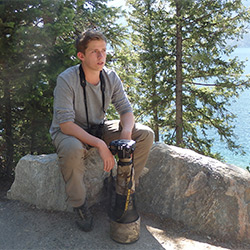 Today’s interview comes all the way from London in the UK and features an extraordinarily talented wildlife photographer named Oscar Dewhurst. Oscar finds inspiration for his work with a connection to the environment as a photographer, birder and conservationist. Through his travels, Oscar has the ability to capture and convey his passion for wildlife and the natural world. As you browse through his photos below, I think you’ll agree that he has a bright future ahead.
Today’s interview comes all the way from London in the UK and features an extraordinarily talented wildlife photographer named Oscar Dewhurst. Oscar finds inspiration for his work with a connection to the environment as a photographer, birder and conservationist. Through his travels, Oscar has the ability to capture and convey his passion for wildlife and the natural world. As you browse through his photos below, I think you’ll agree that he has a bright future ahead.
Oscar, thank you for sharing your thoughtful answers with us and for allowing us to get to know a bit about you. You are a brilliant photographer and someone whose work is definitely worth following.
If you’d like to learn more about Oscar, please visit his website. You can also follow him on Instagram and Twitter.
Can you please tell the readers a bit about yourself?
I’m currently completing my Research Master’s at Durham University in the UK, where I’m working on calculating populations of endemic and threatened birds of central Africa’s Albertine Rift, as well as looking at the potential future impacts of climate change on them, and the effects of competitors on their populations. I’m also an obsessive wildlife watcher and photographer, and have been since I was 10.
Where do you call home?
I live in London in the UK, and have done all my life, although I spent the majority of four years living in Durham (northeast England) while I was at university there.
After browsing through your website, I see that you have built up an extensive collection of wonderful photography. When did you first become interested in photography and how long have you been involved with it?
I started birding with my dad when I was 10, and after about a year began to want to record what I was seeing. Initially, this was via digiscoping, whereby a compact camera was attached to a telescope via a purpose-built adapter. In those days this method had huge limitations, however; in most cases, you needed to find the subject through the telescope, focus on it, then attach the camera and take your photo. Obviously, birds being birds, by the time the camera was attached my subject had often moved! Despite this, I was hooked, so started saving for a DSLR. Fortunately, I had always been a kid that saved money rather than spent it, so by 2013 I had accumulated enough for a Nikon D60 and Sigma 50-500mm telephoto lens. I’m now 23, and the time (and money!) I’ve spent on photography kit has increased exponentially since my first purchase!
Are you formally-taught or self-taught?
I am entirely self-taught, in that I have never been on workshops or formally studied photography, but over the years I have learnt a lot from other photographers. Through email or meeting them at competition award ceremonies and events such as WildPhotos I have gained a huge amount, and will always be very grateful to those who took the time out of their lives to reply to my (often constant) pestering!
What inspired you to be a photographer?
Ever since I was very young I’ve loved looking at photos of animals; in fact, there’s a photo of me sat at my grandparents’ house poring through a book of wildlife photos, and despite not having seen the book for over 15 years, I can still remember one particular photo of a bear about to pluck a leaping salmon out of the air. Photography started because I wanted to record what I was seeing when out birding. I’m seeing more of a split with my photography now, though. There’s the side of me that loves taking beautiful images of wildlife, but there’s also the conservationist in me. Through this latter part, I am becoming more and more interested in including a conservation element within my images, and photographing stories. I think photography is such a powerful tool to inspire people, but also to make people realise the severe threats facing biodiversity today, and it can be combined so well with conservation to reach people.
What type of photography shoots do you look forward to?
I look forward to them all, from ones near my home to going to remote far-flung locations abroad. I love being out there seeing and photographing wildlife, pretty much whatever it is.

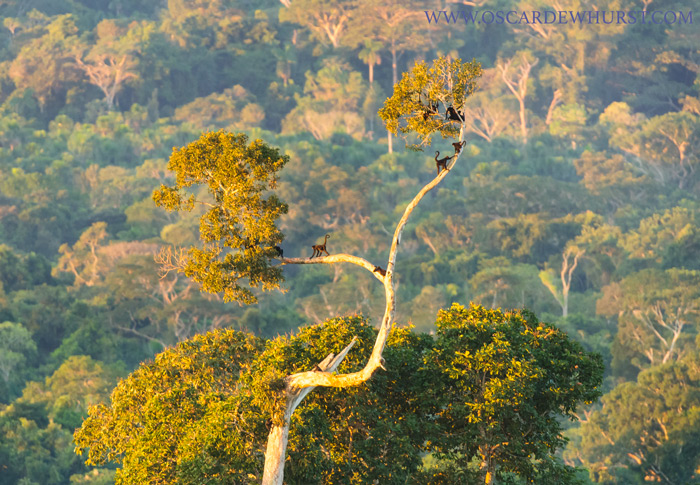
I love being out around dawn, when wildlife is at its most active. Often I’m completely alone, the light can be sublime and there is just so much more atmosphere. Despite every fibre of my body wanting to stay in bed when my alarm goes off at some horrendous hour, and me telling it’s not worth dragging myself out of bed as the conditions might not even be that good, you have to be in it to win it, as they say, and if I stay in bed there’s a 0% chance I’ll get any images!
When shooting subjects, what do you find most challenging?
Getting close enough to the wildlife to photograph it is always a challenge, due to their view of humans as a threat. With wildlife photography, everything has to come together for the best images and it can be very frustrating to have one or some aspects come together, but for it still to be lacking the final piece! Having said that, I still enjoy being out there even if I don’t get the photo I’m aiming for.
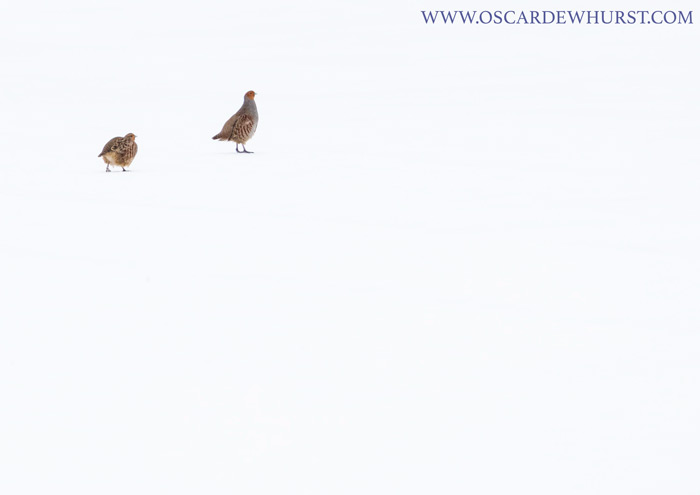
What would you say your most remarkable wildlife encounter has been?
This is tough! Despite being relatively young, I’m fortunate enough to have seen some fantastic wildlife over the years, from howler monkeys in the Peruvian Amazon to the great migration of wildebeest in the Maasai Mara and orangutans in Borneo. Despite this, the encounter that I remember most vividly is without doubt Bitterns on the UK’s east coast. They were the first species that I properly focused my efforts on as a photographer, but being so elusive, the majority of my views were very brief, and usually obscured by reeds! I had always wanted to photograph them from their level, as this adds such a level of intimacy not normally achieved when shooting from above, but I never thought it would be possible as I had never seen it done by anyone else before. This changed in the spring of 2012, however, when I was in Suffolk for a few days. I was able to spend two consecutive evenings photographing a female bird hunting in an area of cut reed as it caught fish in the pools. At points, it came within five meters of me, and I could hardly believe what I was seeing. I also managed some photos I was very pleased with, which made it all the better. This site is now well known for being extremely good for them, and since I visited many others have gone to get their own photographs, but being one of the first people to photograph them in this way, I was elated that I had managed something I’d dreamt of for so long.
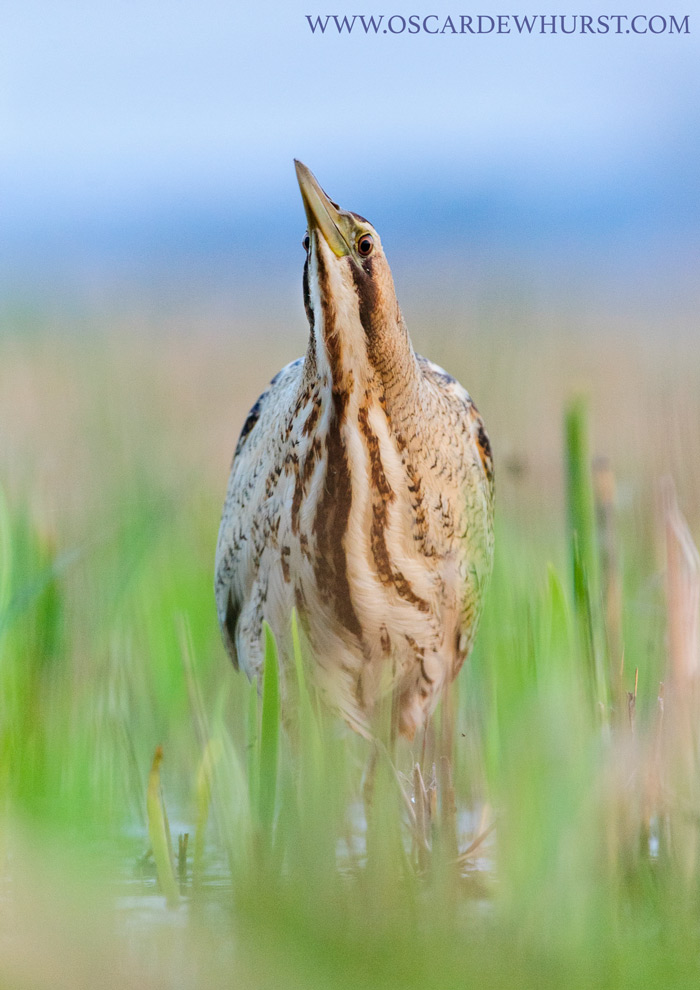
How do you keep your photography fresh and how do you stay motivated to keep on learning?
It’s hard to keep creating fresh images, particularly in the UK where there are vast numbers of wildlife photographers and so much has been so well photographed already. As I’m not currently looking to make a full-time income from it, I can photograph pretty much what I want, which is very freeing, and I don’t need to worry about how commercially popular it will be. I think it’s important to shoot for yourself rather than for other people, which is something I try to do. I also try to focus on projects, as through this you end up with a more in-depth insight of a species, and often better images.
Every year, I eagerly await the announcement of the winners of various photography competitions, and love looking through them online. Living in London, I make sure I go to the Wildlife Photographer of the Year exhibition at the Natural History Museum every year as well. I was lucky enough to have a photo awarded in the competition a few years ago, and visiting it is guaranteed to inspire me and give me a load of new ideas.
What’s the best part of being a photographer?
I love being out there; I’ve always lived in urban areas, so being out on my own in wild areas is something I don’t get to experience particularly often. I also love just seeing the wildlife; if I didn’t photograph wildlife, I would still watch it. At the same time, the feeling when you know you’ve captured a special image is hard to beat.

Share with us your favorite image and why.
I find it almost impossible to pick a single favourite image, but this one is definitely up there for a few reasons. Bitterns were the first subject I dedicated any time to; previously, I would wander around my local nature reserve in London and take photos of anything I happened to come across. Fortunately, every winter this nature reserve was frequented by between one and six great bitterns. Looking online, I saw relatively few good photos of bitterns, so started to concentrate on photographing these over anything else; I’d sometimes spend my whole weekend sat on the same bench in one of the hides waiting for them. The winter of 2010/11 was extremely cold in the UK, particularly just before Christmas, when there was a prolonged spell of temperatures below freezing. In these conditions, bitterns are forced out of reedbeds to search for areas of open water in which to fish.
As it was during school Christmas holidays, I spent as much time as possible trying to photograph them, and on seeing snow forecast on a couple of days, made sure I had no other plans so could hopefully capture these birds in falling snow. On the day this was taken, the snow was coming down heavily for most of the day. I was in the hide as soon as the reserve opened, and had fantastic views of up to seven bitterns as they were forced into the open. Whilst I have several photos of birds much closer, this is my favourite image. The blizzards had been falling for a while and I decided I would have to leave to make sure I could get home before the roads became impossible to travel on (for those who don’t live in the UK, most the country, particularly London, grinds to a halt under more than about 1cm of snow!). Just before I left, I turned back to take one last look, and spotted this bittern just stepping out of the reeds onto the ice. Zooming out, I took this image, then packed my camera away and went home.
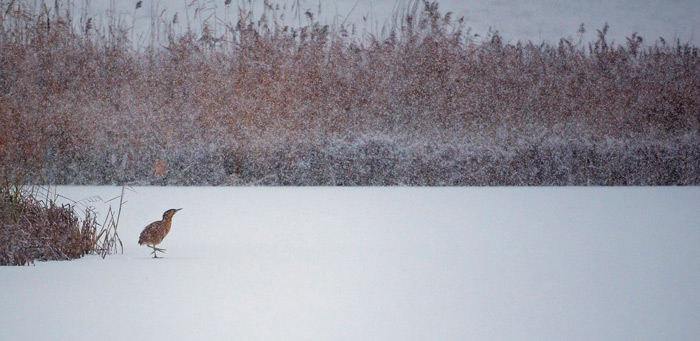
Another reason for this being one of my favourite images is that this was the image that was awarded in the Wildlife Photographer of the Year competition in 2012. That experience still ranks as one of the best I have had, and I am still extremely proud to have had an image awarded in such a prestigious competition. Seeing it exhibited in the Natural History Museum alongside others from esteemed photographers is something I won’t forget!
Do you have any tips for new photographers who want to take better wildlife photographs?
There are lots of things I’d say, but if I was only going to give a couple, first I’d say work early and late. Early in the morning and late in the evening the light is at its best, and allows you to experiment with different light angles, such as side-lighting, backlighting and silhouettes, all of which can be very effective, and are a good way to create images that are a bit different to those that you normally see. Dawn is also when the activity of most wildlife is at its highest, so it pays to be out then. It’s also the best time to be out if you want mist, which can be very atmospheric. The early starts are always worth it!
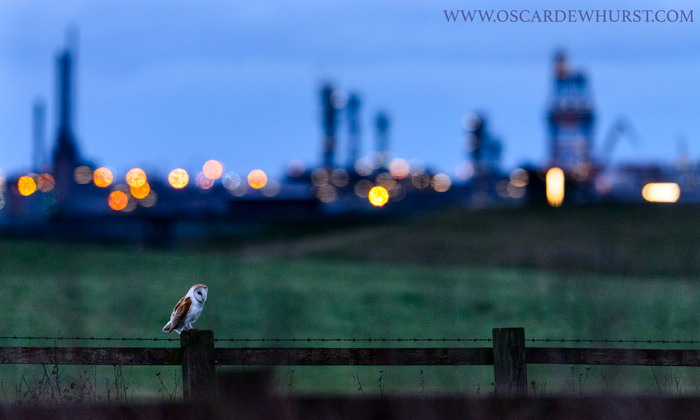
The second piece of advice I’d give is to carry out projects. This means to focus your photography on something specific. It doesn’t need to be a certain species, although these can work well; it could also be about a particular location. What is important is to think about how the images can work together to tell a story. They can also include a conservation element, although again they do not need to. Remember that it doesn’t need to be about something rare; one of the species to which I’ve dedicated a lot of time is foxes. Often, in fact, commoner species are better as they are easier to find, so more time can be spent photographing them rather than trying to find them in the first place! It is also advisable to work locally, so you reduce traveling time, and increase the amount of time you can spend there.

What has been the best source of information along your photography journey (workshop, online forums, classroom, mentor, etc)?
When I was getting into it I used the UK sub-forum of the Nature Photographers Network. At the time it was a fantastic resource for me, as it was populated by a number of well-known professional and amateur wildlife photographers, who were all taking great images. The opportunity to get feedback from these sorts of people when I was a teenager was invaluable, and the majority were very generous with their time.
Over the years I have also sent countless emails to other photographers, who for the most part have been very happy to spend their time replying to me. This has been a great help to me, and I am very grateful to all who took the time to answer my questions.
What industry sites and blogs do you read regularly?
I read a few blogs of other photographers, particularly those I know, but otherwise, don’t tend to read much regularly. I think it’s often better to just get on with it yourself and focus on what you are photographing, rather than worrying about what others are doing and comparing your images to them. Ultimately, if I’m happy with my photos, I don’t really care what others think! Yes, it’s great to be recognised via awards in competitions and likes on social media, but as I’m not doing this full-time I don’t need to be obsessing about whether I am shooting material that is commercial.
What type of camera(s) do you shoot with? What is your favorite lens?
I use Nikon DSLRs and lenses. I’m currently using a Nikon D850, which I’ve had for nearly a year and absolutely love. My favourite lens is without a doubt my Nikon 400mm f2.8. It’s outrageously sharp, has lighting quick AF and pairs well with both 1.4x and 2x TCs for when I need the extra reach. I’m also finding myself wanting to photograph more wildlife with my wide-angle lens now. Despite not having had much success so far, it’s something I’m keen to keep going with.
What is in your camera bag?
Normally I’ll have 2 bodies (Nikon D850 and D800), my 400mm f2.8, a 70-200mm f4 and a 16-35mm. I always carry binoculars with me too, for finding subjects to photograph, or just when I want to put the camera down and watch what’s in front of me. Depending on what I’m heading out to shoot, I may also have a macro lens, or flashes and remote triggers. If I’m using my 400mm, I’ll often have it on a Gitzo Tripod and Wimberley gimbal head, although it’s just about light enough to handhold too, so I often leave the tripod at home as it isn’t exactly portable!
What is your favorite photography accessory?
I don’t use many accessories really. The one item that’s not specifically photographic that I always have with me is my pair of binoculars. They’re very clear to look through and weigh significantly less than my camera setup, so are invaluable for finding my subject. They’re also great when you just want to just sit and watch things, rather than spending all your time with your eye glued to a camera viewfinder!
What piece of equipment would you most like to get but don’t have yet?
The new Nikon 180-400mm f4 lens with the built-in converter looks superb. It’s always a toss-up between weight and flexibility, though. Before the 400 f2.8 I used an old Nikon 600mm f4 lens with no vibration reduction. At 5.5kg without the body attached it was a beast, and impossible to handhold. As good as it was, this lack of flexibility is what led me to a 400 f2.8, which is light enough for me to handhold and is much easier to carry around for a day. However, it’s still a fixed focal length, so lacks the flexibility of something like the Nikon 180-400mm f4 lens. Then again, with my lens I get the benefit of having f2.8, so I can use it in lower light, and it will perform better with a 2x converter. Ultimately there is no perfect lens; each will have limitations, and you always end up compromising. When they make a 100-400mm f2.8 with VR, that’s light enough to handhold, and doesn’t require taking out a mortgage, I’ll be at the front of the line to buy one!
How important is Photoshop or other image editing software in your final images?
I pretty much only use Lightroom, which I find very easy to use. Having said that, it’s just corrupted my catalog for the second time in 6 months, and the backups seem to have all corrupted too so I’m currently trying to find a solution! Within Lightroom I don’t do a huge amount; it is almost always just minor adjustments such as cropping and adjustments to exposure, curves, clarity, vibrance and saturation. I find the adjustment brush to be extremely helpful too, particularly when performing localised edits.
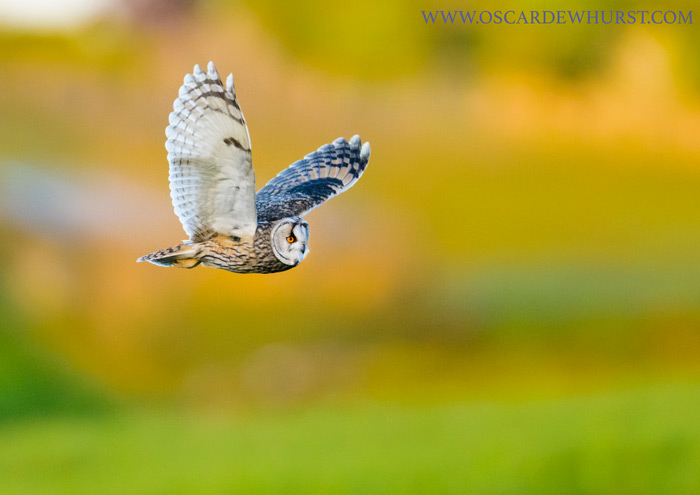
Was there a point in your journey when you started to feel really good about your work? If so, what did it feel like to get past that “tipping point?”
I’m not sure I am! Having said that, starting to be recognised more in competitions a few years ago gave me a lot of confidence. I have a love-hate relationship with competitions. Whilst I think it’s a bad thing to just shoot with them in mind, it is a great feeling to have images recognised, especially after you have put so much work in. My first competition success was when I was 15, and was just an image of a Grey Heron with a perfect reflection against grey water. I wasn’t even going to enter it in the competition, but my mum had a quick look over what I’d selected and said I had to include it! I think 2012 was probably the year I felt I progressed a lot. I had images awarded in 5 competitions, including the prestigious Wildlife Photographer of the Year competition, but it was productive photographically too; in the spring was when I photographed Bitterns at water level, which hadn’t really been done before. I was extremely proud of these images, and as they were thought of a subject that was quite hard to photograph, it got my name out there a bit. In fact, I remember one very well know professional wildlife photographer say at the time that he knew me as bittern boy! This showed me the value of focusing on something, be it a species or something else, particularly when you are young and trying to establish yourself.
Do you have any projects that make you look back and shake your head? What made the experience so unpleasant?
Not really, no. Obviously, there are countless shots I’ve missed, and instances where me as a photographer now would likely do a lot better than I did previously, but then in a few years I’m sure I’ll be able to say the same thing again. What does tend to really get to me is when I see other photographers who have little or no regard for ethics. I’m a firm believer that the welfare of the subject is paramount, and whilst I would openly admit to having inadvertently disturbed wildlife by getting too close (I’d be amazed if there are any photographers out there who can honestly say they have never done this), some people seem to have a total disregard for their subject, and for them nothing is more important than getting the photo on the back of their camera to plaster over social media. There are lots of examples in wildlife photography, with controversial topics like live baiting always provoking debate. Other than saying I completely oppose any form of live baiting, I won’t get further into it as I could write for hours on the subject!
A recent example of the lack of regard for a subject that I’ve been photographing was during the summer, when I spent many hours waiting for Long-eared Owls. These are a notoriously shy and elusive subject, and being nocturnal for the majority of the year makes photographing them a bit of a challenge. Fortunately, the food demands of their growing chicks in the early summer means adults will often hunt in the evenings, offering opportunities to photograph them. This year I was lucky enough to be told by another photographer of some Long-eared Owls he had found that were hunting in daylight each most evenings. Long-eared Owls are very popular with photographers, but unfortunately, they are very prone to disturbance, which can result in abandonment of nests. This means breeding locations are kept understandably quiet, to give them the best chance of rearing chicks successfully. I was therefore very careful to make sure I did not risk disturbing the birds. I positioned myself in front of some rough grassland where they hunted, about 500m from the copse in which they were nesting. Sat hunkered down in a nettle bed so people wouldn’t see me from the paths, the birds would hunt the field in front of me, clearly unconcerned by the presence of me and the photographer who found them. Over several evenings I had fantastic views of them as the quartered the fields and regularly caught prey to take back to the nest. I even managed some photos, and each day would always look forward to my evening visits to see them. Unfortunately, word clearly got out eventually, and one evening I turned up to find maybe 20 other photographers patrolling the area for the birds; a couple of them even went and stood within 50m of where the nest was. Luckily, the birds had a huge area over which they could hunt, so they will have just used other parts of it, but I still found the whole experience particularly unpleasant, so that was my last visit to the site, which was a great shame as I missed seeing them.
What are your upcoming travel plans?
I don’t really have any! I had a couple of projects on the go earlier this year while I was at university in Durham, in northeast England, but since I moved back to London I’ve not done much other than spend a few days adding to my Bittern collection. I have a couple of ideas for things I’d like to do, but they’re in the very early stages so I’ll have to see how they pan out. Sorry, I can’t be more specific!
What do you think the future holds for you? Where do you see yourself in the next few years? Do you see yourself as a photographer many years down the road?
I think I’ll always be a photographer, but whether it will ever be a full-time thing for me is a different matter. I’ve always entertained this fanciful notion of making wildlife photography a career, but the more I think about it the more I question the feasibility of it, and whether it would be better to leave it as a hobby to do alongside my career. I’m currently trying to get into the wildlife film-making industry as a researcher, as this would allow me to combine my interests of wildlife with media. It’s also probably a wiser career choice at the moment, and hopefully will still allow me to take photos while I’m doing it. Whatever happens, I’m sure I’ll be a photographer for many years to come; it gives me too much enjoyment to stop doing it, so I’m just going to have to find a way to fit everything in!
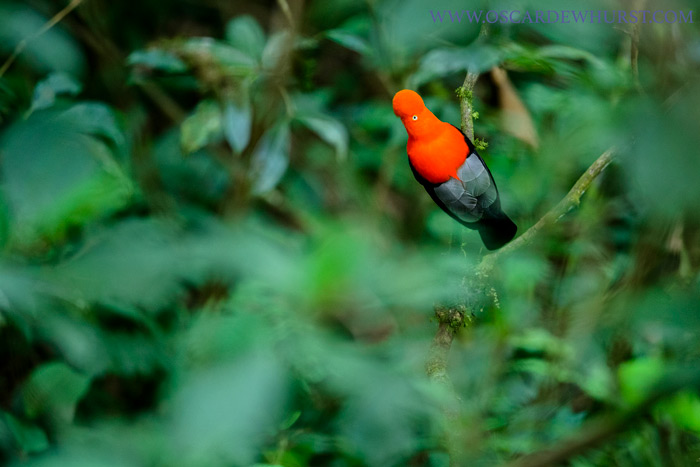
Leave a Reply